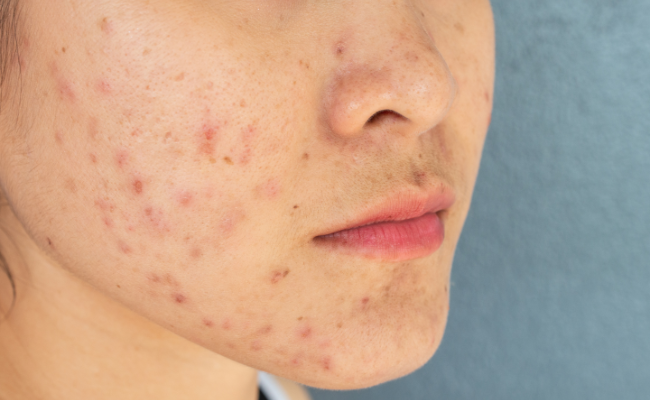How to Treat Pustules?
- December 06, 2023
- No Comments

What are Pustules?
Pustules, prevalent in various dermatological conditions, are characterized by small, inflamed bumps with a red base and a central region filled with pus, often appearing white or yellowish. Hair follicle blockage fosters an environment conducive to bacterial growth, leading to inflammation. Acne vulgaris is a notable example, but pustules can also result from folliculitis and certain infections, causing discomfort or pain.
These pus-filled bumps, resulting from factors like acne, allergic reactions, or infections, require prompt medical attention when accompanied by specific symptoms. The small, fluid-filled bumps resemble pimples, with a tendency to cluster on the back, chest, or face. Often associated with hormonal imbalances, particularly common among teenagers and young adults, pustules represent a prevalent form of acne.
Why Do Pustules Occur?
Understanding the underlying causes of pustules is essential for effective treatment. These lesions primarily develop when the hair follicles become clogged with a combination of dead skin cells, excess oil, and bacteria. The presence of bacteria in the follicles triggers an immune response, leading to inflammation and the formation of pus. Acne vulgaris, one of the most common skin conditions worldwide, is often characterized by the development of pustules, especially during outbreaks. Factors contributing to pustule formation include hormonal changes, genetic predisposition, and poor skincare habits.
How to Identify and Diagnose Pustules?
Identifying pustules is usually straightforward due to their distinct appearance. These lesions present as small, raised bumps with a visible center filled with pus. The base of the pustule is typically red, and they may occur individually or cluster in groups. Dermatologists can diagnose pustules through a visual examination of the skin. In cases where the diagnosis is less evident, a skin biopsy may be performed to rule out underlying infections or other skin disorders.
Treatment Solutions for Pustules:
- Antibiotics: Topical antibiotics, such as clindamycin or erythromycin, play a crucial role in reducing the bacterial load on the skin. By doing so, they help minimize inflammation and prevent the formation of pustules.
- Retinoids: Derived from vitamin A, retinoids are effective in preventing the clogging of hair follicles and promoting cell turnover. This reduces the occurrence of pustules and contributes to overall skin health.
- Antibiotics: In more severe cases, dermatologists may prescribe oral antibiotics like doxycycline or minocycline. These medications address bacterial overgrowth and inflammation from within the body.
- Oral Contraceptives: Women may benefit from oral contraceptives containing estrogen and progestin to regulate hormonal fluctuations, which can contribute to pustule formation.
- Regular Cleansing: A fundamental aspect of skincare involves regular cleansing with a mild, non-comedogenic cleanser. This helps prevent the accumulation of oil and dead skin cells that contribute to the formation of pustules.
- Avoiding Squeezing: Picking or squeezing pustules can exacerbate inflammation and lead to scarring. It is crucial to resist this urge and allow the lesions to heal naturally.
- Extraction: Dermatologists can perform professional extractions to safely remove pustules. This involves using sterile tools to release the pus without causing further damage to the skin.
- Chemical Peels: Chemical peels involve the application of a chemical solution to the skin, promoting exfoliation and unclogging of pores. This can be particularly beneficial in preventing the formation of pustules.
Benefits of Treating Pustules:
- Improved Aesthetic Appearance: Treating pustules contributes to a clearer and smoother complexion, enhancing overall skin aesthetics and boosting self-confidence.
- Prevention of Scarring: Timely treatment reduces the risk of scarring. Pustules, if handled improperly, can lead to permanent skin damage, making scar prevention a significant benefit of effective treatment.
- Reduced Inflammation and Discomfort: Treatment options aim to reduce the inflammation associated with pustules, alleviating pain and discomfort experienced by individuals with these skin lesions.
- Enhanced Self-Esteem: Clearing pustules contributes to an improved sense of self-esteem and well-being. Individuals often feel more confident when their skin appears healthy and blemish-free.
- Long-Term Skin Health: Establishing effective skincare habits and addressing the root causes of pustule formation contribute to long-term skin health. This reduces the likelihood of recurrent outbreaks and fosters a sustainable approach to skincare.
Comments (0)